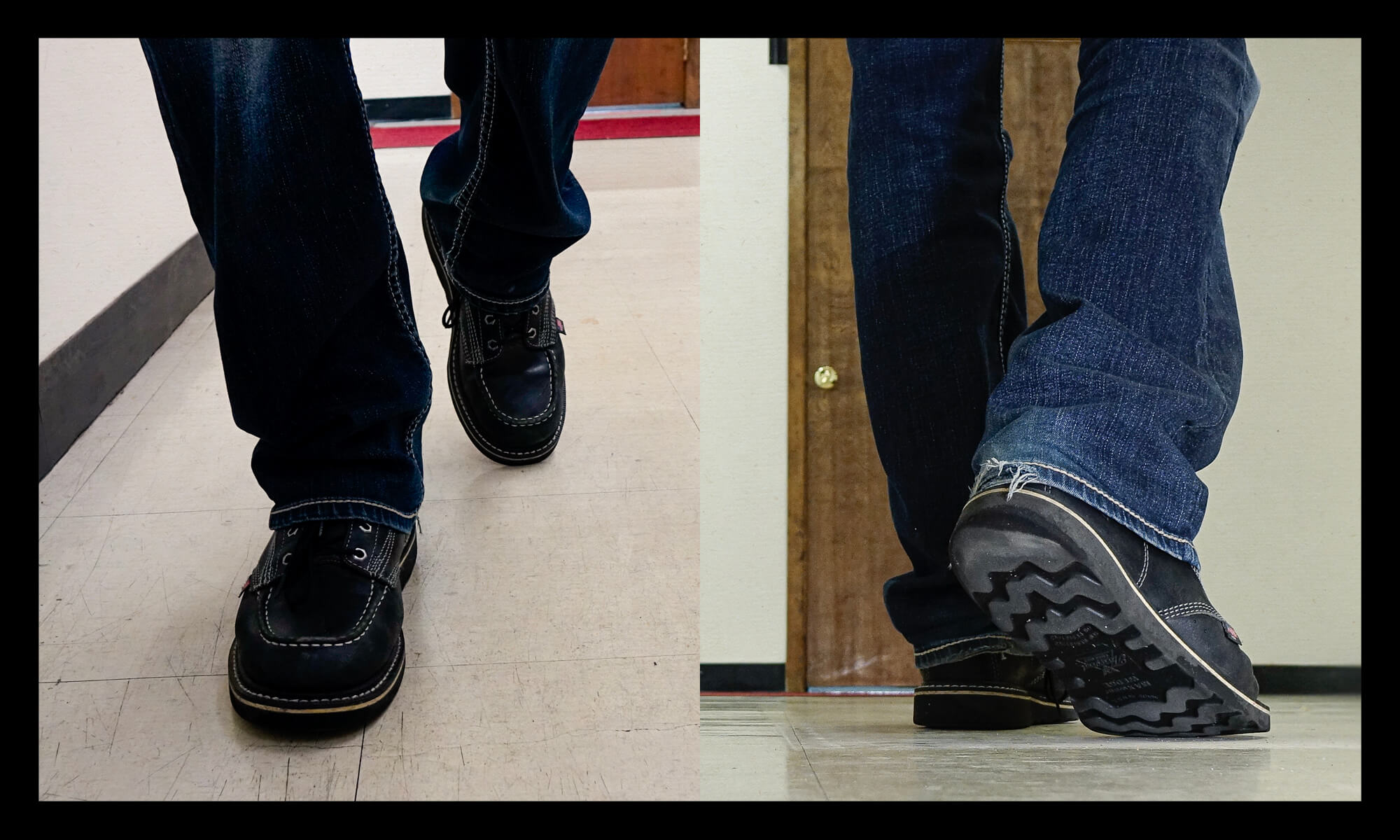Who doesn’t love a new pair of work boots? The smell of high-quality leather, the blemish-free exterior, perfectly clean soles … it’s what dreams are made of. You excitedly put on your boots, ready to tackle another day, until you take a few steps and cringe - you have the “new boot squeak.”
It’s a common occurrence, but annoying, nonetheless. Let’s break down why your boots are squeaking and a few different ways to address the issue.

First, What Makes Leather Boots Squeak?
Natural fiber structures in leather can expand and contract as they are exposed to extreme temperature, moisture, and movement. As they change with their environment, they may creak and begin to make noise. Higher quality boots tend to have more layers in their construction, leading to a few spots that are more prone to squeakiness.
One common cause of squeaky boots is because of the layers of material between the midsole, welt, and insole. As your boot absorbs weight, these materials will compress and contract, and can often be a bit noisy as they’re broken in. Most quality boots have a reinforced heel cup, which will also flex and change with wear and can and rub against other parts of your boot.
Another reason behind a squeak can be your sock slipping against a leather insole. This can happen if your boots don’t fit properly and your foot slides as you walk. This can also lead to blisters and hot spots, so make sure your boots are nice and snug, so your feet don’t slip inside your boots.
The squeak can also come from the exterior of your boot. New soles are prone to squeaking, especially on slick surfaces like tile, hardwood, or smooth concrete. Since most of Thorogood’s outsoles are polyurethane, on slick surfaces the outsole will squeak, it’s a safety feature letting people know you are nearby on a worksite. Unfortunately for pranksters, it can make sneaking up on others difficult.
Lace-up boots might make noise between the laces and boot tongue, especially if they have a stiff exterior. As the tongue rubs against overlapping sidewalls, it might squeak until the leather softens.
How Long Do New Boots Squeak?
Usually until they’re not new anymore. A lot of times, the easiest squeaky boot fix is time. Simply breaking in your boots can make the sound go away, but this can take anywhere from days to months. The good news is that there are a few tips and tricks we have on how to make boots stop squeaking faster.
How Do You Make Boots Stop Squeaking?
- Apply leather conditioner routinely – Regular conditioning will help make your boots more supple and allow the leather to break in quicker. Make sure to condition the tongue of your boots too, which can imperceptibly shift while you walk and cause squeaks. Dried out leather can become brittle and make more noise than a buttery soft boot exterior.
- Apply a powder to the inside of your boots – Cornstarch, baking soda, or other talc-free powders can wick extra moisture and minimize the squeak of your sock sliding against an insole. If you have a removable insole, dust inside and on top of the insole. Make sure you add a bit of powder around the boot tongue as well.
- Expert tip from our team - If you replace your insole, the cupping around the edges of a new insole can squeak when you walk. Get a small amount of wax under the edge of the back half and it should help!
- Use sandpaper on your boot soles – If rubber soles are squeaking on slick surfaces, the best remedy is to simply create more friction and grit for adherence. This is the same technique that’s used to create a stronger adherence between paint and surfaces. Simply rub sandpaper on your outsoles.
- Try using WD-40 – This trade secret might not be the norm, but some people swear that spraying WD-40 on their leather work boots can help make them supple and break-in faster. As a bonus, it’s a great way to clean tough-to-remove stains, grease, or grime. Will it make all the squeakiness go away? Probably not, but if you’re looking for something to try, give it a go and share your results with us!
- Try using a dryer sheet - If your boot soles are squeaking on smooth surfaces, trying rubbing a dryer sheet against the sole. You may have to do this a few times, but it’s a low effort way to try and improve traction.
Every boot is as unique as it’s wearer, so when you’re looking at how to stop boots from squeaking, you may have to try a few different solutions and have patience. Well-constructed leather boots are often a bit noisy in the beginning, but as your boots bear your weight and break in, you should hear fewer creaks and squeaks.
